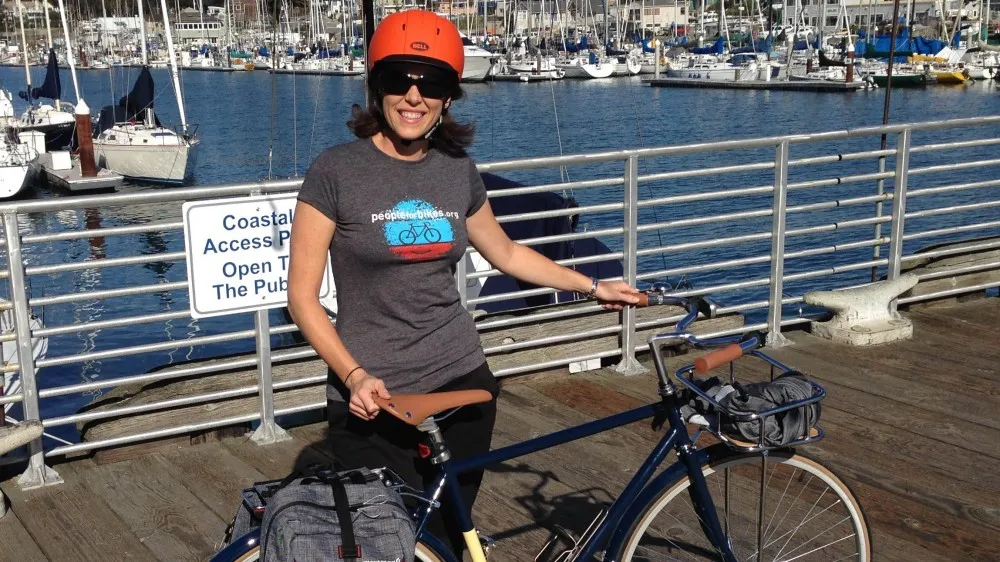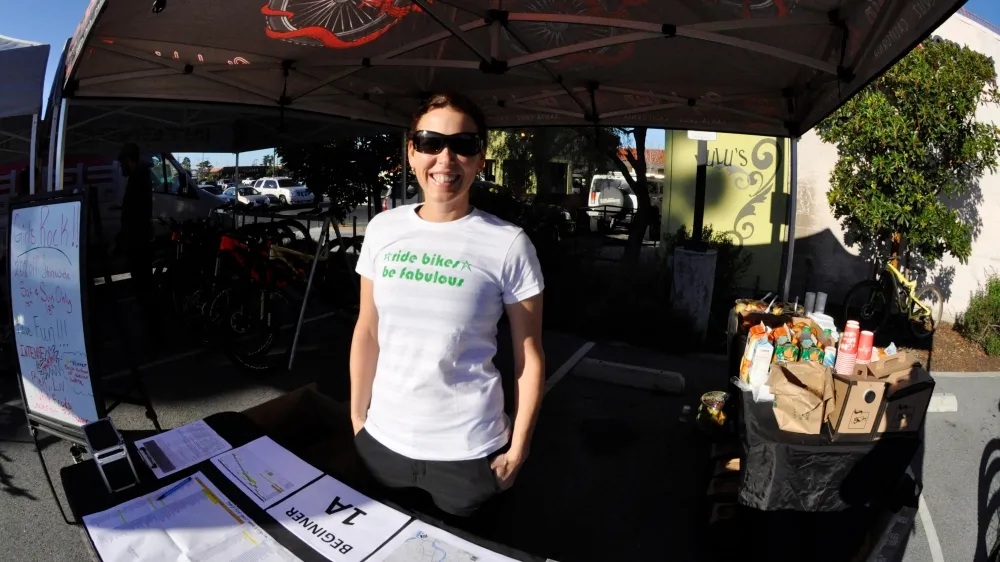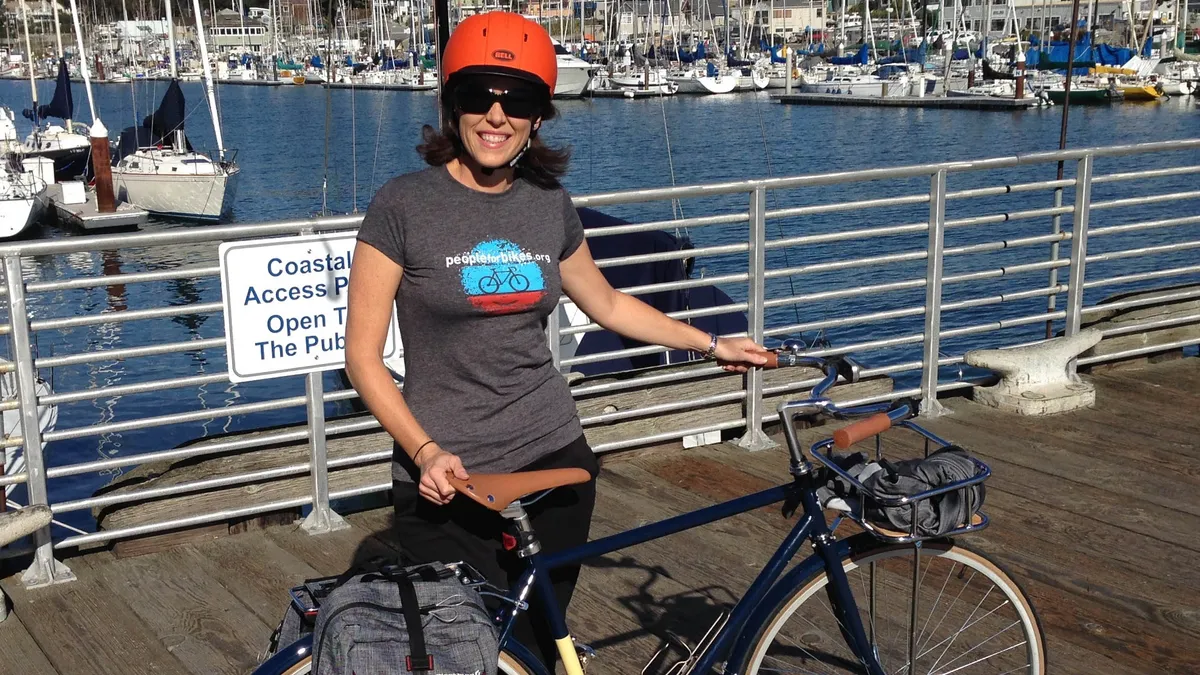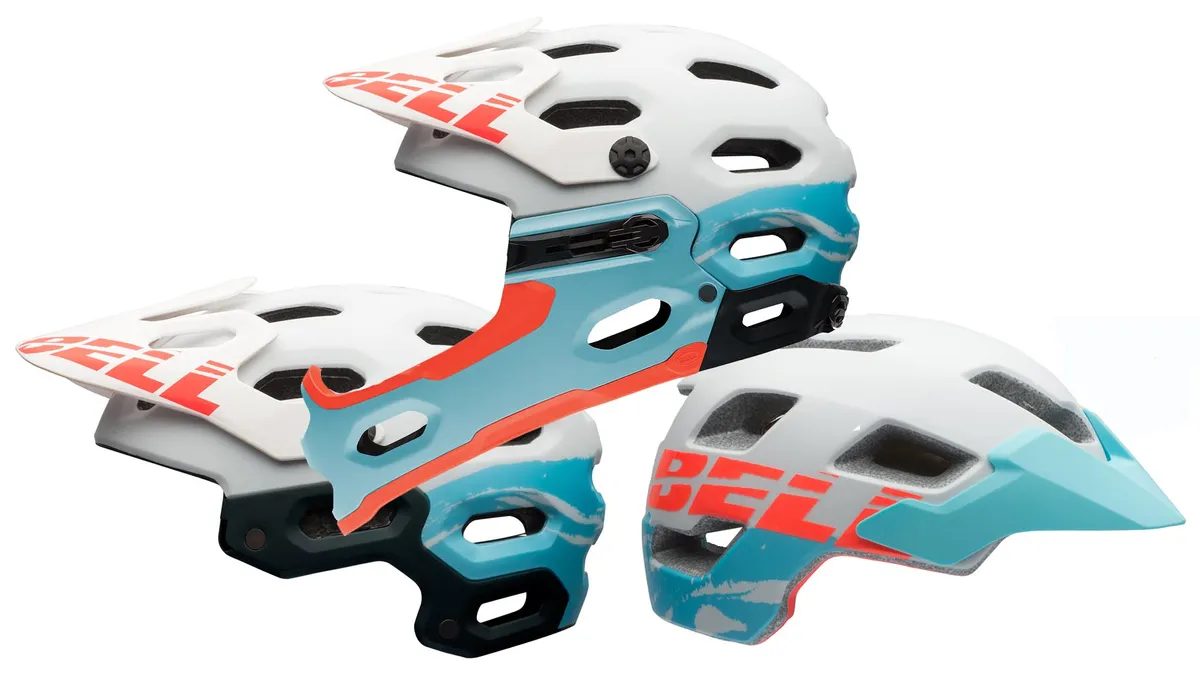Not so long ago, Bell Helmets found itself gripped by something of an identity crisis, the venerable brand’s executive vice-president and general manager Jessica Klodnicki tells BikeRadar.
The feeling was that Bell, with a 61-year history steeped in motorsports, machismo and pro-rider endorsement of its products, had lost some of its connection with its customer base. “About a year or more ago, we decided we wanted to reset,” Klodnicki says, acknowledging that people didn’t necessarily associate Bell with mountain biking – contributing to a feeling that it had lost its personality.
As you’d expect from one of the most senior women in the cycling industry, Klodnicki’s media experience is apparent in some carefully chosen responses as we chat over a transatlantic line. But she concedes that Bell, hardly uniquely in the cycling industry, had become seen as an “inherently masculine brand”.
That recognition, though, has been turned to Bell’s benefit this year with the launch of its new Joy Ride collection of women's helmets. With the decision taken to redevelop the brand’s ethos, and to bring a grassroots, ‘community’ feel back to the fore, came the opportunity to address the burgeoning women's cycling market, starting with mountain biking – something that Klodnicki says she’s determined to focus on.
A non-intimidating riding environment
Klodnicki's own experience of mountain biking in many ways exemplifies the growth of women's cycling through informal social networks, and the experiences many women have when getting into the mountain biking.
“About a year and a half ago, I was a new mountain biker,” she reveals. “I love riding, but I was too intimidated to ride with the guys from the office.”
Related: Women: would you work in a bike shop?
An encounter with a friendly face at a trailhead led to a few social rides, which collected more women mountain bikers along the way. “After about six months, there were 70 of us meeting regularly and organising rides through social media,” Klodnicki says. “I decided to make it more formal and it became Girls Rock.”
Now boasting 350 members, Girls Rock rides regularly see 80 to 100 women ride out with Klodnicki, with some travelling upwards of an hour to join in. The focus is on inclusivity and fun, and the rides are social and non-intimidating with a system of ride leaders and sweepers ensuring bikers of every level are catered for and no-one gets left behind.
The rides also opened up useful dialogue, with Klodnicki able to to talk to women about what they wanted from cycling brands and products – an obvious advantage for someone in her position – and her companions gaining direct access to someone with influence over products, to make their needs and views felt.

The Girls Rock women's mountain biking group started life as a social ride group, and as numbers grew became more formal but no less fun
“I felt it was important that we didn't just take on board their opinion,” Klodnicki continues. “I wanted them to know they weren't just talking to themselves, that we understood.”
Other companies and businesses soon spotted the opportunity, and Klodnicki worked with them to develop themed rides and clinics, often starting at local bike shops. Women, she says, have been able to find out more about specific products – from Fox shocks and White Lightning cleaning products through to women-only brands and locally produced bike-themed accessories.
Getting past pinks and purples
The planned revamp of Bell Helmets, the success of Girls Rock and Klodnicki’s direct approach to research intersected perfectly, providing an ideal means for Bell to work on products informed by what the growing women's cycling market actually wants.
Klodnicki and her team surveyed more than 750 women, asking them about the products they already owned and liked as well as what they'd like to see. The research process took longer than a year.
“We talked to the women about their primary motivation for riding,” says Klodnicki. “Although some, of course, said they wanted to race, for most it was about the joy, the sense of freedom riding their bikes brought them.
“We also asked them whether or not the current products on the market felt too masculine, just right, or too feminine – and in fact most responded that they found products too feminine. They didn't like the overtly pink or purple designs that dominated.”
According to Klodnicki, the women – perhaps unsurprisingly – wanted the same performance product as the men, albeit in a package and design that was (despite their comments on pink and purple) a little more feminine and worked with the clothing and gear they had.
“We showed them colour swatches, mood boards and so on, to see what styles they liked, and the top ones weren't [stereotypically] girly at all – for example, camo print with mint green accents was popular,” she says.
Bell’s new helmets weren’t just informed by the opinion of female riders though. The lids were also developed and designed by an almost exclusively female team of Bell staff, drawn from across the company.

The mountain bike helmets in the Joy Ride collection include the Super 2, Super 2R and the Rush, left to right
The result is the Joy Ride range – 10 women's helmets spanning road, mountain biking and commuter cycling. The helmets are based around new or updated helmets in the Bell range, with new colours, associated images and marketing.
The physical designs themselves don't differ from the unisex or men's options. "The primary difference between men's and women's heads is the size,” says Klodnicki, so the Joy Ride collection will be available in smaller sizes.
Brand ambassadors
But the Joy Ride concept doesn't stop at a helmet range. Part of Bell’s focus has been on giving back in order to reconnect with cycling communities. It's done this with programs such as Bell RideFree days, which provide free uplift access at trail centres
With Joy Ride, she says, Klodnicki saw the chance to do something more than organise standalone events. She wanted to recreate the success of Girls Rock in new locations.
"There are lots of barriers to entry in mountain biking, so I wanted to expose more women to it. I wanted to replicate the success we had with Girls Rock by developing a tool kit to fast-track grassroots growth in women's cycling in areas where there wasn't already a scene – but I didn't want to compete with existing organisations."
Bell has recently closed a call for women to join its ambassador program. The successful applicants, drawn from across the US and Canada, will be invited to Santa Cruz to be trained up on how to develop and run a cycling initiative like Girls Rock. Klodnicki states that she's not particularly looking for pro racers, but women that are organised and good at event planning.
"Having talked to many women, I feel that the gateway to mountain biking for women usually isn't racing – it's through grassroots events like the Sturdy Dirty women's-only enduro and organised rides. These events aren't intimidating; they're organised and structured but there's no commitment." With the Girls Rock rides, women can come as little or as often as they wish.
Klodnicki is keen to point out that she supports the more competitive side of mountain biking too though, with Bell sponsoring a number of athletes including world champion Rachel Atherton.
Of course, Bell isn't the only brand to harness the word-of-mouth exposure an ambassador program can bring. Juliana Bicycles, another Santa Cruz resident, has been using it for a number of years, choosing women felt to embody the brand to raise awareness. Rapha, Findra and Liv cycles also have similar schemes.

Klodnicki is keen to spread the magic formula of Girls Rock through the Joy Ride Ambassador program, with a view to growing mountain bike participation in new areas
Looking ahead
So what does the future hold, for the Bell Joy Ride program and for women’s cycling more broadly, in Klodnicki's opinion?
"We may roll out the Joy Ride program internationally if it's a success – it would be great to have them in other countries," she says. This, however, might be something local distributors would coordinate, rather than the team at Bell’s Santa Cruz HQ.
And women's cycling as a whole? “Running had a boom in participation, and many would say that's down to the growth of women getting involved," says Klodnicki.
If running can do it, so can cycling, she concludes – it’s just a matter of taking the right approach.




